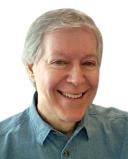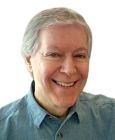Marriage
Three Stories of Loss, And How Each Person Healed
Each kind of personal loss requires a different path for healthy acceptance.
Posted December 21, 2021 Reviewed by Lybi Ma
Key points
- Sudden loss can arouse dormant inner strengths.
- Lifelong loss can trigger wanting to "pay it forward."
- Loss of a critical life experience can generate a new sense of purpose.
It begins right after Halloween, runs through Thanksgiving, and into the new year: The onslaught of holiday-themed music in supermarkets, store displays, and the ever-present Hallmark-type movies on TV. Commercialized holiday cheer washes over all of us—no matter what your religious or secular beliefs are.
But it’s not so cheerful a time for some. The holidays can heighten awareness of significant losses. Images of warm family connections—real or idealized—can leave those who have experienced losses feeling alone, isolated, and aware of not having the same life so many others seem to be enjoying.
Three different kinds of loss are especially painful during this stretch of holiday cheer. And each involves a different path of healing.
Janet: Sudden loss arouses new personal strengths
Sudden loss is unexpected and highly individualized. Janet met and married a man who had raised his children alone for several years after becoming widowed and until they went off to college. He was several years older than Janet, and she had not been previously married. Their marriage worked well for both of them; they “clicked” together. They decided not to have children of their own and enjoyed their couplehood through a marriage of over four decades
Janet enjoyed a domestic life after taking early retirement from her job as a bank branch manager. Her husband, an avid golfer, looked forward to their eventual move to a retirement community near the southwestern city where they had lived and worked. It had an adjacent golf course, which he loved.
Janet didn’t care for golf, although she had fun with occasional lessons. Nor did she have much interest in the social activities offered at the retirement community, nor in getting to know other residents there. She felt somewhat hesitant, a bit shy, around people she didn’t know. Instead, she enjoyed cooking, finding new recipes for her and her husband to try, and staying in touch with some childhood friends who were scattered around the country.
One quiet Friday afternoon, Janet heard a loud thud in another room. She discovered her husband collapsed on the living room floor. He was felled by a massive heart attack. Having made few friends in the community, the sudden, unexpected loss was systemic: Her life focus had been the relationship. She was hit with a flood not only of grief but of helplessness and fear about what comes next. The sudden loss also affected her physically, she lost interest in eating and maintaining her health.
Janet describes having felt numb through the days that followed. She barely remembers her call to the ER, the trip to the hospital, the funeral arrangements, the Church service, and burial afterward. It was a blur. And when the holiday came around a month later, she saw all the Christmas decorations and activities in the retirement community, which only deepened her sadness. But it also triggered an awakening. Some of the residents reached out to her, knowing the grief and helplessness she was experiencing.
That, in turn, stirred in her a desire to face the reality that she was now alone, and had been unprepared for that possibility. She realized that she had kept herself aloof from social contact with others and activities. She resolved not to go down the path of despair, depression, and isolation and knew how damaging it can be to mental health. She told me, “I have nowhere to go but forward. I’ve got to move one day at a time. One day at a time,” she repeated.
That became her healing mantra. She said it meant deliberate efforts to engage with others; create greater human connection than she had allowed herself to experience during the decades of her marriage. It meant learning how to live and engage herself with the people around her, there, where she lived. In fact, she recalled that she used to enjoy talking and bantering with people at the bank where she worked, prior to her marriage. She would turn her unexpected personal loss into a new direction in her life. That was healing, as well as new growth. Now, at holiday time, she surrounds her loss with memories of what was joyous about her years with her husband; and joins that with valuing the connections she’s made with her expanded life.
Ted: Lifelong loss stirs giving to others
Ted has experienced a different kind of loss. It’s part of the fabric of his life: He has no family. An only child, his mother died when he was 10 and his father was never in the picture. Fortunately, he had support from an aunt and uncle, and went on to college, law school, and into a good career with a government agency. He has a network of friends and is often an “uncle” to their children. Ted had one relationship in his 20s, but it ended when his partner died from a sudden illness. Since then, he told me, he’s been content with living a more solitary life.
Nevertheless, he lives with an awareness of having no real, family connection of his own. He’s adapted to it and knows that feeling grateful for what is positive is important. Research shows it’s linked with health, in fact. But until recently, he said, the holiday period hit him painfully hard. It didn’t help much when friends would invite him to family gatherings or holiday-related events. He appreciated it, but during the holidays he would feel a heightened awareness of being “different” from others; from those who enjoyed partners, children, grandchildren. During those times, he said, “I’m bombarded with all of the family-relationship stuff, the sappy movies on TV, the displays in the stores, everywhere.”
The yearly reminder of his lifelong loss, of what he never had to begin with, took a different direction and led to healing unexpectedly. He had been reading some news accounts about the problems of homeless people and those who seem to fall through the cracks of society. One day “a light bulb went off” while reading about a nonprofit organization in his Washington, DC neighborhood called Friendship Place. It provides a range of drop-in services to homeless people and others in need of a variety of social support. For example, helping them find housing opportunities, providing them with an address to receive mail, help with finding employment, or the use of a computer for sending and receiving email. Ted thought that he could use his experience dealing with bureaucracies and agencies to help people.
In short, that opened a path for Ted to find healing for his aloneness, for the absence of family connection that became more acute at holiday time. He discovered that offering some service to that organization balanced the feelings of being “left out” of family connection. He reflected on the many people in his city, around the country, and around the world who have little human connection in their lives. They may be poor, or immigrants trying to establish a new life; or those devastated by the unexpected, a sudden fire that destroys their home or apartment; or a terrible weather event, such as what swept through Kentucky and neighboring states in December. Today, Ted embraces more fully a sense of gratitude for all that he’s thankful for in his life. He now finds it meaningful and fulfilling to “pay it forward.”
Susan: Loss of a critical life experience leads to new meaning and purpose
The third story is different from Janet’s or Ted’s. But like theirs, it feels more poignant at this time of year. For Susan, this time is a heightened reminder of an enduring loss of some critical years in the lives of her stepchildren. But through it, she discovered a path towards healing its damage.
To explain, Susan is a journalist and author who has traveled widely and internationally. Several years ago, she met a man during one of her trips abroad. He was divorced, with two small boys that he and his ex-wife were raising. The couple fell in love and married. Susan is white, from a Jewish background and a native of New York, where her parents sacrificed to ensure that she would have a quality education. Her husband, Said, is African, a Muslim from Kenya. Said became a US citizen after relocating here with Susan. Part of their plan and hope for their marriage was to bring the boys to the US, for greater educational and life opportunities. The plan had the full support and encouragement of Said’s ex-wife.
Susan looked forward to being a loving stepmother to the boys, as she and her husband would create a lasting, stable family life. Her desire was sharpened by the memory of painful losses in her own family history: her brother’s early death in a bus collision in Nepal, the loss of her father while she was still in college. But in an interview, Susan explained that for over five years, now, immigration authorities and bureaucratic procedures have derailed the boys’ immigration. In 2017, U.S. agencies questioned the validity of her marriage. Said’s divorce had to be documented repeatedly, even though the State Department had the documents ever since he came to the U.S. some years earlier. To their surprise, Susan and Said later discovered that the US authorities were unaware of Islamic divorce protocols, which were easily available on Google.
The enduring loss for Susan is the inability to have provided a home, family life, and quality education for the boys during their critical teenage years. But those years passed by, as they have not been allowed to immigrate. Her anger has been strong; her sadness debilitating at times. Healing is not easy, no matter what kind of loss. But what helped Susan was realizing that her emotional acceptance of the enduring loss of those critical years of nurturance and support opened a path forward. It was freeing. That is, embracing that reality released her to create new meaning and purpose through an aggressive quest to overcome immigration obstacles. That meant proactive, unrelenting action: Pursuit of all legal efforts, and – using her journalist skills -- writing about the damage that US Immigration policies inflict upon so many people who seek to unify or reunify their families.
Plunging forward now, Susan and Said are building a plan for the boys when the immigration obstacles are finally overcome—which is almost certain to happen, as Said has been a citizen—and they can join their father and stepmother in a new life path. As I reflected on Susan’s story, I couldn’t help but wonder if the unusual and long-lasting problems she and her African Muslim husband have encountered from the Department of State and USCIS reflect some degree of embedded racism?




